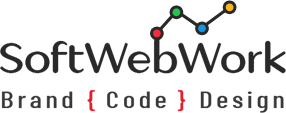Content Management System
A Content Management System (CMS) is software that allows users to create, manage, and modify digital content on a website without needing advanced technical knowledge. It simplifies the process of web development and maintenance. Here are the key aspects and considerations when working with a CMS for web development:
Choosing the Right CMS:
Evaluate different CMS options (e.g., WordPress, Drupal, Joomla, Shopify, or custom-built solutions) to find one that suits your project’s needs in terms of features, scalability, and ease of use.
Installation and Setup:
Install and configure the chosen CMS on your web server. Ensure it meets the server requirements for the CMS to run smoothly.
Content Creation:
Use the CMS to create and manage web content, including text, images, videos, and documents. Most CMSs provide WYSIWYG (What You See Is What You Get) editors for content creation.
Templates and Themes:
Customize the design and layout of your website using templates or themes. Many CMSs offer a variety of pre-designed templates, or you can create custom ones.
Plugins and Extensions:
Extend the functionality of your website by adding plugins or extensions. These can provide features like e-commerce, SEO optimization, social media integration, and more.
User Roles and Permissions:
Set up user roles and permissions to control who can access and edit content within the CMS. This is crucial for collaborative websites with multiple contributors.
SEO Optimization:
Utilize SEO plugins or features provided by the CMS to optimize your content for search engines. This includes adding meta tags, optimizing images, and creating SEO-friendly URLs.
Security Measures:
Regularly update your CMS and its plugins or extensions to patch security vulnerabilities. Implement security best practices to protect against hacking and data breaches.
Performance Optimization:
Optimize your website’s performance by using caching, optimizing images, and reducing unnecessary code or plugins.
Backup and Recovery:
Set up automated backups of your website’s content and database. This ensures that you can quickly recover data in case of data loss or system failures.
Content Versioning:
Some CMSs offer content versioning, allowing you to track and revert to previous versions of content. This is helpful for collaborative content creation and editing.
Multilingual Support:
If your website needs to cater to a global audience, consider a CMS that supports multilingual content.
User Training:
Provide training to content creators and administrators to ensure they can effectively use the CMS to manage the website.
Scalability:
Ensure that the CMS can scale as your website grows in terms of content, traffic, and functionality.
Mobile Responsiveness:
Test and optimize the website for mobile devices, as an increasing number of users access websites on smartphones and tablets.
User Support and Community:
Join the CMS’s user community or support forums to seek help, share knowledge, and stay updated on best practices.
Compliance:
Ensure that your website complies with legal requirements, such as GDPR for data privacy, and accessibility standards (e.g., WCAG) for inclusive design.
